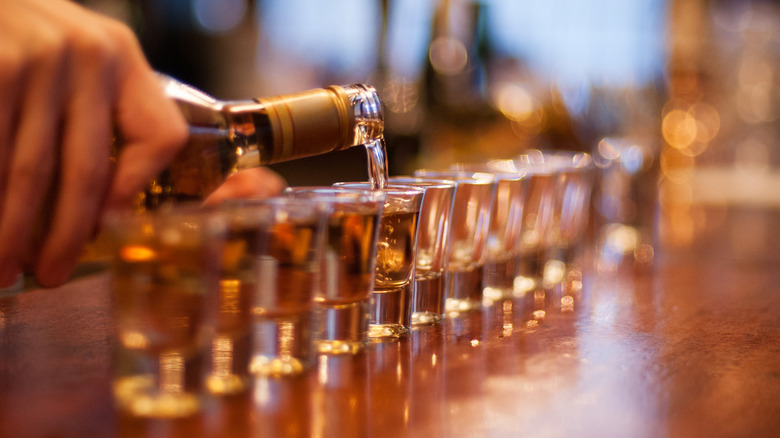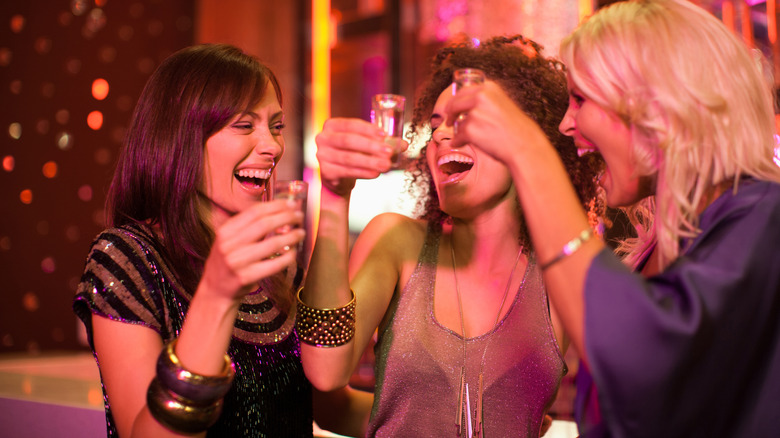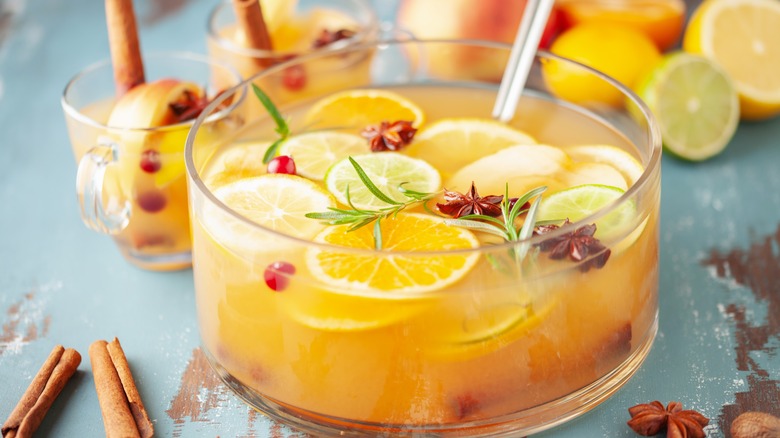How Many Shots Are In A 750 Milliliter Bottle Of Liquor?
Most of the time, we're not overly concerned with exactly how many shots are in a bottle of booze. There are as many as there are to make our Moscow mule or old fashioned, or to share a few shot toasts among friends. However, there are times when using precise amounts is important, such as with more involved recipes or when planning for a large party. After all, even cheap alcohol costs real money, so waste and poorly made drinks are best avoided.
The standard alcohol bottle in the United States is 750 milliliters. This convention reportedly dates back to winemaking in 19th-century France and was originally influenced by economics and mechanics of manufacturing and distribution. There's a fun myth that the bottle size was related to the lung capacity of glassmakers. However, there is no upper limit to how big a vessel a skilled glassblower can make, tiny lungs or large. On the other hand, when you buy a bottle of whiskey, tequila, or vodka, there's a finite number of toasts you and your friends can make.
Arguably, the easiest way to determine how many shots are in a bottle of liquor is simple math. The average 750 milliliter bottle converts to about 25.4 ounces. With a standard 1.5 ounce shot glass or jigger, there are about 17 shots. But here's the rub: The same way a cookie recipe claims it makes 30 cookies, but there are 16 when you finally bake them, all sorts of factors affect the number of shots you'll actually get per bottle.
Determining shots per bottle
First, there are three standard shot glass or jigger sizes: 1 ounce, 1.5 ounces, and 2 ounces. The 2-ounce pour tends to be the preferred volume in bars, giving many cocktails structure and a better flavor balance. If it's a 2-ounce glass, you're going to get 12 or 13 shots. But there are other factors to consider. Souvenir shot glasses from theme parks and resort destinations, for instance, are likely not as calibrated as those sold at restaurant supply stores.
Also, just as with heaping cup or teaspoon measures in baking, people can pour differently (particularly after two or three shots). Hitting the measurement line (or spilling over) can create a wide amount of variation. In reality, because most people pour to the top of a shot glass or a measurement line, expect about 15 or 16 shots with a 1.5-ounce glass and 12 shots with a two-ounce glass. And, of course, be certain that you're dealing with a 750-milliliter (not 700-milliliter, which was only recently approved for use in the American market) bottle to begin with.
Why counting shots counts
When entertaining, planning ahead is key. A bottle of vodka may seem like a lot of alcohol, but eight guests getting two tequila shots or two cocktails each burns through a whole lot of liquor quickly. Add spillage and over-pouring, and the number of bottles required can add up during a large party.
For large format cocktails, like punches or batching for a party, measurements become vital. With a punch, you're trying to booze it up the right amount, but not so strong it overpowers the drink. Whether you're making enough mimosas for a crowd, the perfect Fish House Punch or a basic watermelon-and-vodka picnic drink, it helps to know how to scale things up (one cup equals about five 1.5-ounce shots, FYI). For pre-batched cocktails, some ingredients, like spices, simply don't scale up (you'll usually need less cinnamon or salt per serving). And sometimes dilution is needed: The standard rule is to add water at 10% of the total volume of ingredients. In the end, the goal is twofold: Making certain you're creating the best drink possible, and that you have enough shots for you and all your friends to celebrate in style.


